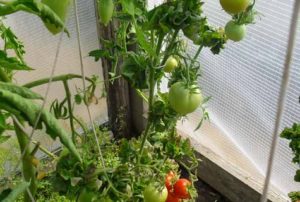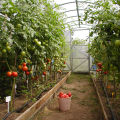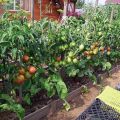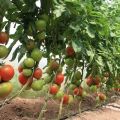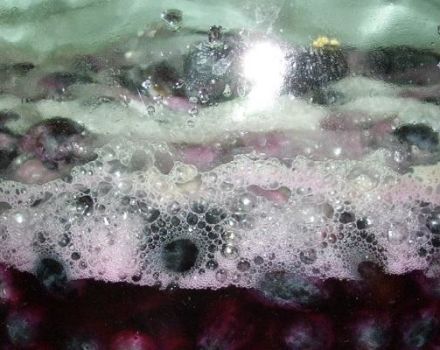Characteristics and description of the tomato variety Swamp, its yield
The Swamp tomato belongs to the exotic category. He conquered many gardeners with his green fruits interspersed with white, red and yellow shades. Tomatoes are unpretentious in care and cultivation.
This species was bred by Russian breeders as a variant of green-fruited tomato species. The description of the variety says that it consistently gives high yields and has a pleasant taste.
Description of the variety
Swamp tomatoes are early maturing indeterminate varieties. Its distinctive feature is unlimited growth. Depending on the conditions, the height of the bush varies from 80 centimeters in open ground, up to 1.5 meters in protected greenhouses. To get a high yield, the bush is formed into 1, maximum 2 stems. The bushes do not differ in a large number of stepchildren, but their removal as they appear is necessary.
Fruiting begins as early as 90 days after the first shoots appear. When planting in a greenhouse, the first fruits are harvested in the second half of June. Long-term fruiting, ends at the end of August.
The shape of the fruit is round, slightly flattened on both sides. Ribbing on tomatoes is pronounced. In an immature state, tomatoes are dark green in color. As it ripens, the color changes to green interspersed with pink or yellow. In the area of the stalk, there is a dark spot on tomatoes. Swamp tomatoes have excellent taste.
They earned high marks due to their pronounced sweetness with a slight sourness. The variety has a high yield. With proper care, up to 6 kilograms are harvested from one bush.
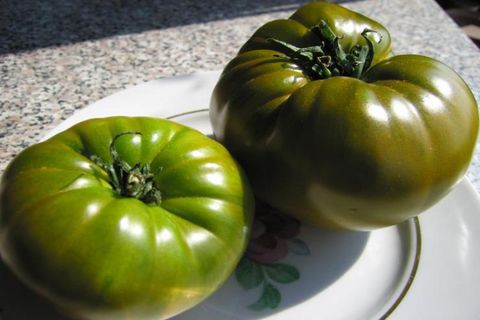
The use of grown tomatoes is versatile. Due to their original appearance and excellent taste, they become a decoration of any table. Tomatoes are actively used in fresh salads or as an independent cut. Many gardeners make canned vegetables from Swamp tomatoes, assorted vegetables. The variety is not suitable for commercial use. This is evidenced by the peculiarities of its storage and low rates of transportability.
Advantages and disadvantages
The Swamp tomato is a novelty, it appeared on the market not so long ago, but it has already firmly gained popularity among many gardeners.
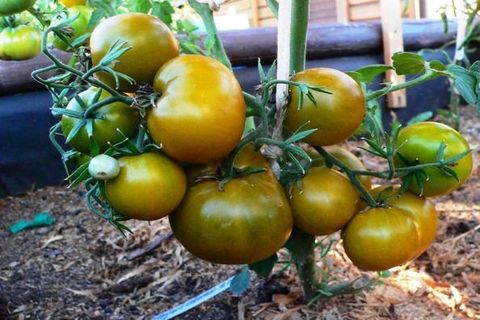
The advantages of the Swamp variety include:
- unusual appearance;
- good taste;
- early ripening of fruits;
- high productivity;
- stable fruiting in high humidity conditions.
Numerous reviews say that it is not difficult to grow tomatoes even in the absence of specific knowledge. It is unpretentious in the choice of soil and does not require special additional care.The characteristics of the variety indicate a number of disadvantages. Gardeners note the sensitivity to transportation and short storage. The fruits are easily crumpled and lose their presentation.
Features of agricultural technology
Agricultural technology of tomatoes Swamp is not difficult. Gardeners recommend adhering to a number of rules and preparing material for planting in advance.

- Seedling preparation. Seeds are planted for seedlings in early March. Also, the variety can be planted at an earlier date.
- Light, nutritious soils are chosen for the seed. Before sowing, the seeds are soaked in antiseptic solutions.
- Temperature regime and care of seedlings. For seedling containers, the temperature regime is maintained in the range of 22-25 degrees. Before the appearance of the first shoots, watering is practically not done. After the sprouts appear, the containers are transferred to a bright place. Seedlings are watered as needed.
- Picking. To strengthen the root system at the stage of 2-3 leaves, a pick is carried out.
- Transfer to the ground. Seedlings are transferred to the ground at the end of May. The variety shows the best results when grown in closed greenhouses.
- The soil. Light soils with neutral acidity are considered optimal for Swamp tomatoes.
- Watering. Tomatoes are hygrophilous. Watering is carried out daily, but they make sure that the water does not stagnate on the ridges. Swamp is one of the few tomato varieties that bear fruit well in rainy summers. They can even tolerate swampy soil.
- Top dressing. Fertilizers are applied several times per season. Use universal mineral formulations.
- Pest control. The variety is not resistant to diseases and pests. For this reason, regular inspection and treatment of plants with disinfectants is carried out.
Diseases and pests
The variety is considered not resistant to disease. It is easily susceptible to late blight, rot. The fruits and roots of the plant are most severely affected by anthracnose. The disease manifests itself in the form of softening of the peel of the fruit and a change in their color to brown. Gradually the stain grows, becomes black, dries.
The defeat of tomatoes occurs as a result of high humidity. As a struggle, several methods are used:
- seed treatment before sowing with immunocytophytes;
- periodic processing of bushes with Quadrix or Flint;
- treatment of diseased bushes with sulfur and copper solutions.
In addition, gardeners recommend 1-2 times per season to carry out treatment with complex preparations against diseases and pests.
Swamp tomatoes are an amazing green variety. He is unusual to the eye, but after the first sample of ripe fruits a feeling of complete satisfaction arises. As noted by a number of gardeners: "If you need unusual, but very tasty tomatoes, I plant the Swamp."

